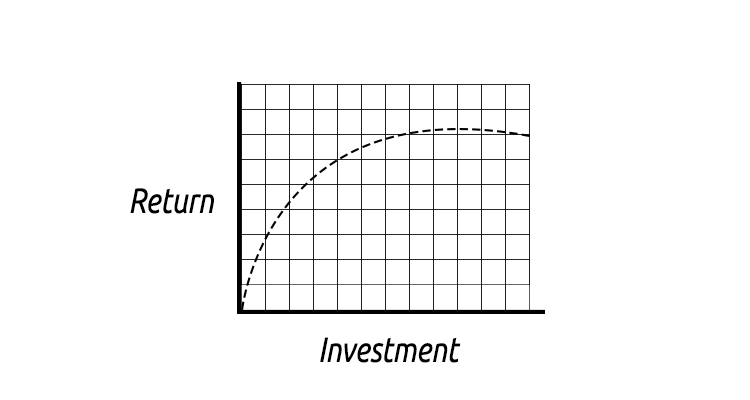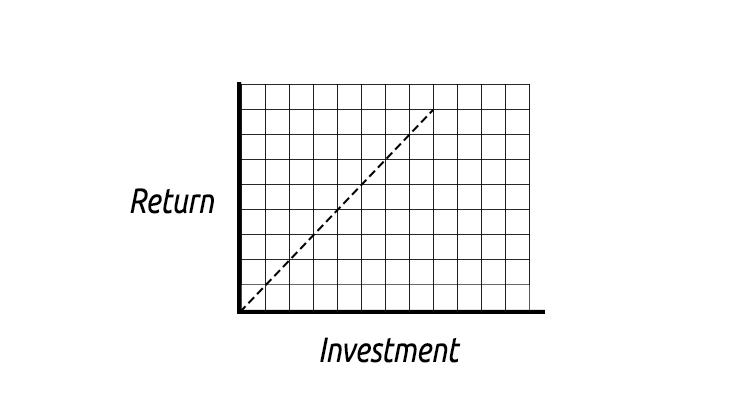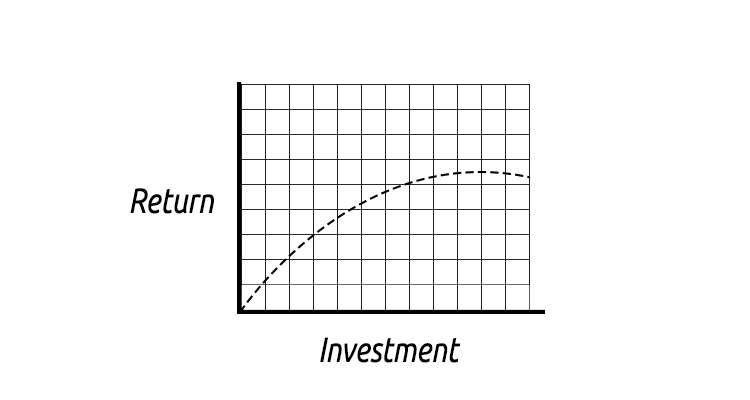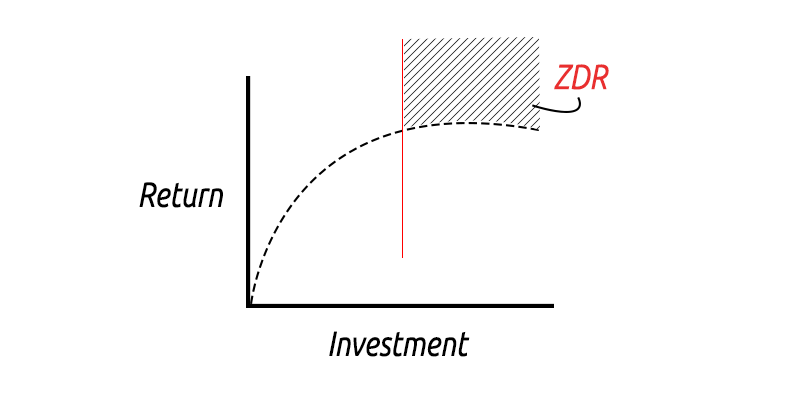What You Need to Know About Performant Marketing
How do you know which marketing strategies and tactics perform well with little investment? How do you know which marketing campaigns will perform better as you fund them further??
As a marketer, small business owner or enterprise CMO, understanding which campaigns will scale is a constant struggle. Anyone who’s tried to make an idea, product or service catch fire knows marketing and sales are often the toughest puzzles. You need all the pieces to come together with little wasted time or money — even more so as a small business owner or startup marketer.
Since you know you have limited resources, the solution is clear: you need to do more with your money.
Understanding whether your marketing campaigns are Scalable or Performant is just the first step.
Scalable vs. Performant Marketing
Over the course of many agile marketing sprints spent pulling data to understand the performance of our marketing strategies, we’ve come to realize two things:
- Certain marketing strategies work well and net a dramatically positive ROI with minimal investment – we call this Performant Marketing;
- Others net positive ROI at scale – we refer to this as Scalable Marketing.
Knowing the difference between the two types of marketing campaigns, when they work together and their limitations will help you evaluate the output of your marketing efforts and determine where you should allocate your resources.
What Is Performant Marketing?
Your marketing strategy is a Performant Marketing strategy if the return on investment is substantial — meaning you see fantastic results with little initial investment.

A good way to think of this is put in 1 and get out 10.
How to make your marketing strategy more performant:
You can make your strategy more performant through optimization — whether that’s through conversion rate optimization, dialing in your target audience or streamlining processes to save time and effort invested. Goals should include:
- Increasing conversion
- Decreasing costs (or maintaining costs while pursuing one of these other methods)
- Improving targeting for ideal customers (Not conversion but reach)
Performant Marketing explicitly does not include methods we’ll include in Scalable Marketing.
Performant marketing strategies are attractive to those with fewer resources or those looking to reduce costs — often startups and small businesses.
Examples of Performant Marketing
Generally speaking, marketing channels that allow you to gain traction in your market with little capital investment can all be Performant — if executed well and if they fit your particular industry:
- Word of mouth marketing
- Content marketing with inherent virality
- Conversion rate optimization
- Social media outreach
In fact, Gabriel Weinberg and Justin Mares outlined 19 such marketing channels in the Traction Book that may be Performant if executed well.
In order to understand which work well for your audience, it’s best to start with small-scale experiments, adjusting your approach to find sweet spots as you go. Just remember, Performant strategies don’t necessarily imply scalability. Even if one of your strategies performs well in a small-scale environment, you need to look at it through a different lens to determine if it will scale up.
What is Scalable Marketing?
Your marketing strategy is a Scalable Marketing strategy if it returns positively on investment, but requires more investment in order to achieve significant gains. Here, you can play the numbers game — you get out a multiple of what you put in.

A good way to think of this is you put in 1 and get out 2.
As opposed to Performant channels, you are able to scale these marketing strategies up with additional investment. Actually, with the kinds of returns we are talking about, you’re probably better off doing so. A penny in is 2 pennies out; a million in is 2 million out.
While it is great to know you will continue to see returns as you increase your spend with these channels, you must also possess that capital up front in order to invest.
This is the difficult part of growth through Scalable Marketing for startups and small businesses: they simply don’t have the initial investment required to make a quick impact with these marketing strategies.
Examples of Scalable Marketing
Pay-per-click marketing channels, such as Google AdWords, serve as great examples of Scalable Marketing. So long as you have a relatively low cost per acquisition, a well-tuned AdWords campaign can generate more traffic and leads as you increase your spend.
How to determine if your marketing strategy is scalable:
Here are a few methods to test your marketing strategy’s scalability for your company:
- Invest more money into your channel, does your return scale?
- Duplicate your marketing strategies across more buyer personas, does your return scale?
- Duplicate your marketing strategies across more industries, does your return scale?
More generally, you can also qualify the marketing strategy by looking at larger industry trends and competition. At scale are you going to encroach on an entrenched competitor who has a larger budget than you? Competitors who have already paid to reach scale will not be moved easily.
Need more traffic coming into your site? Raise your budget. It works for a while, but even Scalable Marketing channels have their limitations.
Pitfalls of Scalable Marketing
While we are using the assumption of a purely linear relationship in this example, we know in reality ROI is never perfectly linear.

2:1 returns can eventually become 1.5:1 returns or even 1:1 returns
Your marketing strategies’ ROI can be linear around a specific range, say from $1 million to $10 million investment, but at the peak you will start seeing diminishing returns.
Understanding when a Scalable marketing campaign starts diminishing is when making your marketing strategy more Performant has significant value.
Performant vs. Scalable: Understanding the Relationship
Knowing when a marketing strategy is Performant or Scalable is the difference between mediocrity and break-out success.
You’ve reached mastery level when you’re able to take a look at your marketing playbook, identify which plays are Performant or Scalable and make meaningful adjustments on the fly.
Scalable and Performant Marketing are not mutually exclusive. Although it is difficult to make a Performant marketing campaign scale, it is not unheard of. More often you will find a Scalable marketing campaign made more Performant.

Gotta love that sweet, sweet grey area.
Let’s go back to that well-tuned AdWords campaign we mentioned — a perfect example of Scalable Marketing. Sure, we’re happy for every dollar we put in we get 2 in return, but what if we wanted 3 in return, or even 4?
Make your campaign yield greater return by applying Performant strategies.
Further refine your landing page’s messaging and A/B the design to achieve Conversion Rate Optimization (CRO), or dial in your ads to target a few well-performing regions, as opposed to the entire country or world.
Monitor your campaign’s performance, and measure your multiple of ROI:

#PerformantMarketing
Diminishing Returns: Is it Time to Switch Gears?
One area you should be wary of on that graph is where your returns plateau — or worse, start to dip back down.
This is the dreaded Zone of Diminishing Returns (ZDR), and as strategic marketers we want to avoid this zone at all costs.

The zone is lava.
Both Performant and Scalable strategies will eventually reach a ZDR — Scalable strategies are limited by the market size. The masterful Performant marketer knows when the zone is getting close, and how to avoid it. This could be your indication it’s time to make your Scalable strategy more Performant, or time to switch gears entirely and find a new strategy that works for your business, letting your scalable strategy stay static.
Once you are in the ZDR, you are losing money and wasting resources, so it is critical you have someone on your side with a clear view of the path ahead to watch the terrain change.
It All Comes Back to Data
In order to know the moment you’ve hit a Zone of Diminishing Returns, you must have access to the right data and analytics. Likely this will come in the form of a suite of tools working together to provide you with all the numbers you need.
Important KPIs into which you’ll want to have insight are:
- How much you’re investing into the strategy,
- What impact it’s having on your bottom line (its return),
- Its rate of impact (how Performant it is).
ROI Doesn’t Provide the Full Picture
But sometimes it is not enough to simply take into account how much money you’ve spent on a marketing campaign versus how much you get out. Some things to consider beyond the holy-grail ROI metric:
- Calculations of costs is complex
- Key performance indicators may indicate performant strategies in the future, but you may have to get past a certain threshold of investment
- Opportunity cost of the strategies you select over the strategies you don’t
Human capital and time spent working on a project are very important considerations, and often are not well-measured within organizations.
If, for example, your social media outreach strategy is to post four times a day, how would your return change if you only posted one per day?
Sure, it doesn’t cost you any more to create 3 more organic social posts, but take into account the man-hours spent drafting each of those posts, and how that time could be spent elsewhere.
Perhaps reducing the number of times you post per day would have very little effect on your return, but allow you to save on resources invested – congrats, you just made that strategy more Performant by saving on human capital and freeing up opportunity cost
It’s all coming together.
At Facet, we’re constantly tracking costs, keeping tabs on effort invested and monitoring returns so we have a clear point of view when we report to clients what’s working and what is not.
The science of optimizing marketing strategies across a multi-dimensional array of key performance indicators is exciting to us.
If you’d like to learn more about Performant or Scalable Marketing, or ask a question about how these strategies could impact your business, drop us a comment below.

